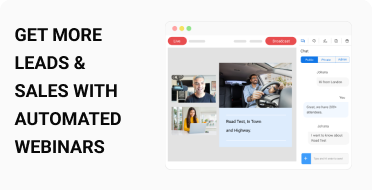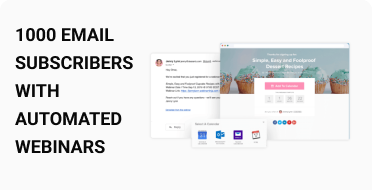What Are the Advantages of Automated Webinars?
Automated webinars offer several significant advantages that can benefit your business in various ways. Some of these are as follows

Automated webinars serve as a trust-building machine. They offer a consistent, professional experience every time, making them reliable. They also allow for regular interaction, delivering value and showing you care about your audience.

One of the major advantages of automated webinars is their ability to generate leads continuously. Unlike live webinars, which can only be conducted at specific times, automated webinars can run on autopilot, allowing you to capture leads around the clock.

While live webinars might attract a large number of attendees at once, automated webinars can ultimately gather more attendees over time. Since automated webinars can be scheduled to run multiple times a day, they provide more opportunities for people to attend at their convenience, leading to higher total attendance over a given period.

Automated webinars are particularly effective for products or services priced at $2,000 or less. They can automate the sales process by presenting offers during the webinar and following up with a sequence of emails. This continuous engagement and reminder system helps convert leads into customers more efficiently.

Automated webinars build brand affinity by repeatedly exposing your audience to your brand. From the registration page to the follow-up emails, every interaction reinforces your brand presence, helping attendees become more familiar and comfortable with your business.

Automated webinars allow you to scale your efforts without being constrained by time. They free up your schedule, enabling you to focus on other critical aspects of your business, such as product development, marketing, and customer service, while still engaging and converting leads.

Automated webinars provide an opportunity to generate and nurture leads by offering valuable content and maintaining regular contact. Through the webinar and subsequent follow-up emails, you can guide potential customers through the sales funnel, building trust and demonstrating the value of your offerings.






